Darren Conway
Darren Conway has a rather depressing rule which he applies to his career as a BBC foreign news cameraman. “I decided a long time ago that I'll never tell anyone about the things I've seen, and I stick by that.”
Four times winner of the RTS award for best news cameraman - largely for his work in war zones including Afghanistan, Iraq and Lebanon - he says: “I've seen some terrible things, but I can deal with them because I understand that not everyone is as lucky as you or me.”
Recent coverage has included a trip to Helmand Province in Afghanistan, where Conway and Alastair Leithead, the BBC's Kabul correspondent, slept in bunkers and filmed battles between British troops and the Taliban and The Battle for Basra Palace, a Panorama report from Iraq with Jane Corbin (pictured).
Reliable equipment is incredibly important for a cameraman who might be in a remote area without access to support. Conway says that the BBC's foreign news standard, Sony's Betacam SX camera, is a great workhorse.
“It has survived a sandstorm in the deserts of Iraq and Afghanistan, bumping over sandy terrain in an open-topped vehicle at temperatures of more than 50 degrees with nothing to cool the camera down. At the other extreme, I have filmed pieces [with the SX] in the Arctic at temperatures of minus 50 degrees.”
Durability issues
He worries that the new generation of HD cameras will not prove as durable or as easy to manage. “They have additional electronics and in my experience they break down a lot. They also tend to be more complicated, which can make them difficult to repair,” he says.
Conway's camera arsenal comprises more than just the SX, and includes the Panasonic 900 and DigiBeta, but the SX suits him best. “It has an internal radio mic with four channels of audio, which is great because there's no boom mic. The camera is also really good in low light.”
Conway is keen on experimenting with tapeless solid-state formats, as time spent digitising from tape to Final Cut Pro editing can be costly for breaking news. In Lebanon last year, Conway came under fire and needed to get footage to the BBC for the Six O'Clock News quickly. Conway edited his footage in an old-fashioned linear tape-to-tape way using an SX deck - this cut the time normally taken by half because he didn't have to digitise the tape.
He is less positive about other technological advances, HD in particular. “HD is a well-marketed enterprise that will see consumers and professionals buying new products. But I don't particularly like the look, which is sharp and flat. I prefer a film image that allows you to balance the depth of field and colour.”
However, it is not the technology but the story, and the people, that are most important to Conway, who says empathy is an essential characteristic in his job: “You've got to fit in, understand and adapt to the people you're filming.” He adds: “I've thought I might lose my life on several occasions. Afterwards, I consider whether it's worth it.
“Enabling millions to understand a story means it is.”
David Odd
“There are no lows to this job,” says drama cinematographer David Odd BSC, whose credits include ITV's acclaimed Half Broken Things, My Boy Jack, Persuasion and his most recent project, He Kills Coppers for ITV1.
Odd is not just a camera fanatic but a big fan of camera manufacturer Arri, which he has been dealing with for 30 years. He says of the company: “It is incredibly supportive and it produces such good cameras. It invented the spinning mirror camera [the Arriflex 35, made in 1937] before the war - this was the first reflex movie camera. It still works to this day.”
He currently uses an Arri 416 and insists it suits his needs perfectly. It is reliable, simple and “can play any tune I ask it to” he says, adding: “It is incredibly quiet which means I can get as close to the action as I need without the sound recordist complaining of a camera fan whirring.”
The Arri 416 is a modular camera meaning it works in many configurations and a cameraman can add his own elements to achieve the right look. Odd's favourite apparatus includes Arri lens control system and the wireless monitor, meaning the director can move anywhere on set.
Just as the technology has changed the role of the cinematographer has changed: “Today you're expected to be a magician, the budgets and time constraints are so great you have to use years of experience to manage a shoot successfully. Every minute saved is a bonus.”
So far the Arri 416 hasn't yet seen as much of the world as his old Arri SR1, which filmed presidents Reagan and Carter, witnessed Rhodesia becoming Zimbabwe, and filmed Uganda in the aftermath of Idi Amin's rule.
Odd is a craftsman who loves his medium as much as his equipment, and that tends to be 16mm Fuji or Kodak film. “There has never been such a good time for it. Film stocks and lenses are at their nadir at the moment.”
Although Odd likes the HD post process, he believes that we are in the early days as regards HD cameras, with no one standard as yet. He says: “People don't know which camera or process they should be adopting.” He also says that a lot of people are confused about the format's specialised language. “The tech people may as well be talking Latin. It puts people off. It could see some really talented people leave the profession.”
He adds: “There are lots of different deliverables which can add to the spiralling cost of HD productions,” he adds. “I always adopt a ‘keep it simple' approach, but some big broadcasters and production companies have lost this and things have become impossibly complicated.”
More frightening is that some broadcasters want to rule out film completely. Odd says: “The film community is on a knife edge because of engineering decisions that have been made with very little consultation with the people making drama.”
Odd likens the drive to shoot everything in HD to replacing a cooker with a microwave. “Film has a more satisfying effect at the moment. HD is still in its early days and who knows how it will develop.”
John Downer
John Downer has been a natural history cinematographer for the BBC for 25 years and still works largely for the corporation, with recent projects including The Jungle Book (a co-production with Pathé) and Tiger - Spy in the Jungle. Well-known for camera innovations and his groundbreaking approach to wildlife photography, Downer has a catalogue of colourful production stories, including the time he hand-reared a duck for the making of 1986 series In Flight Movie. “It followed me everywhere,” he says. “Its attachment to me meant I could make the first film of a bird in flight from the air.”
He describes the process: “I was hoisted into the air on a parascender towed by a Land Rover, then I released the duck from a box strapped to my front. I watched it fly off until it became a tiny dot. Then it suddenly grew until there it was flying along beside me like I was its mother.”
The benefits to the natural history genre of new technology includes an increase in quality and a decrease in size, says Downer, who says his team tends to shoot in HD, taking two Sony HDW-750s on location. These are used alongside 10 HDV cameras which, according to Downer, suit the genre perfectly because they are small and can be easily camouflaged.
“The cameras must put up with a great deal of battering,” he says, citing the trials of three-part BBC series Tiger - Spy in the Jungle, which begins on Sunday. Three cubs were filmed over two years until they reached adulthood. The series used the Trunk-Cam, a camera system innovated by Downer, which comprised a Sony HDW-750 hidden inside a fibreglass mould that looks like a tree trunk. Elephants were trained to follow tigers while carrying the camera. “The all-time high of my career was filming a family of five tigers, some of which I had watched grow up, go hunting for the first time.”
Downer's other innovations include Tortoise Cam, an HDV camera hidden inside a fibreglass tortoise and Dragonfly Cam, a tiny HD camera hidden inside a miniature remote-controlled helicopter.
Downer's all-time low is less pleasant: “I was filming an episode of Lifesense for the BBC. We wanted to film inside a bat cave in Bali. It was a holy site and we had to take our shoes and socks off. The ground was thick with bat guano and cockroaches and we knew the cave was inhabited by poisonous snakes.”
But Downer loves his job and says: “Enthusiasts who keep abreast of technological change can use new cameras and kit and create beautiful images. That's how amateurs become professionals.”
Jon Lord
“I'm a rower and one of the biggest kicks of my career was filming the Boat Race on the Thames from the umpire's launch in 2002. It was the year the race was stopped after a collision that caused one of the boats to lose an oar, and I was right at the centre of the action. The umpire said to me: ‘Do you think it was the right decision?' I told him what I tell my staff: ‘You went with your instinct, that's all you can do.'”
Jon Lord has worked for the BBC for 24 years and has been a supervisory cameraman for 12. Currently preparing for a multicamera shoot for Portsmouth's FA Cup semi-final against West Brom, Lord will collaborate with an “allocator” from the production team to determine where the eight to 10 cameramen will be situated: “I'll put my most experienced cameraman behind the goal - the easiest position. This means I can forget about it, because I trust him implicitly.”
Ready to shoot
Lord and the allocator will divvy up the team's skills. One cameraman may be a handheld specialist, others will be more experienced with the Steadicam, with their roles and positions decided accordingly. However, Lord says that they must use their initiative and, if they see some amazing action outside their remit, they will need to make a split-second decision to shoot. “If the commentator mentions a piece of action before the cameraman sees it, it is lost forever. The cameraman needs to be primed for anything.”
Lord's work is divided between live jobs, which involve up to 50 cameras at events like the Olympics and smaller jobs involving a producer, cameraman and a sound engineer (these jobs are called PCS). A recent example was filming motorbike tests for Moto GP in Herez, Spain using the Sony Digibeta with a top light from Ianiled. He says: “I was chatting with a producer and saw a crash involving James Toseland out of the corner of my eye - I caught it on camera.”
For live events and PCS, the BBC uses a combination of Sony DigiBeta, HDV and Philips slow-motion cameras.
Of HD, Lord says that the amount of sport airtime is around 40% to 60% HD, thanks to big events such as the Olympics and Wimbledon. BBC sport committed to move to HD last summer - a good thing according to Lord. “Although HD can magnify problems with the lenses and focus, there are huge benefits.” He argues that the peripheral equipment, including lenses with 100/1 zooms and pan and tilt heads, has been improved to make the HD image better. “Every element needs to be right to get a good HD picture,” he says. “This includes the viewer equipment, the lenses, the heads and the editing format.”
Lord also says that he likes the reduced depth of field offered by HD. “If only a small element of the picture is in focus, the cameraman can be really creative about directing the viewer's eye.”
He adds: “Some sport HD pictures are incredible. I took some footage of England versus Germany at Wembley last year. A Steadicam operator was on the sideline while Beckham was preparing to take a free kick. His position was fixed but the crowd was moving. The audience gasped because the picture was so impressive.”
Broadcasters have not decided which tapeless format to opt for - Panasonic's P2 and the Sony XDCAM EX, both solid-state formats, are still going head to head. Lord says that cameramen are holding their breath to see which version wins out.



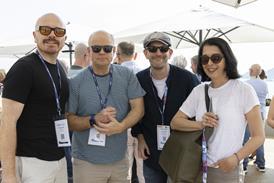



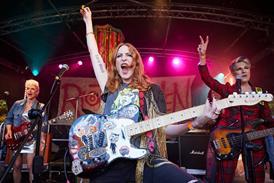
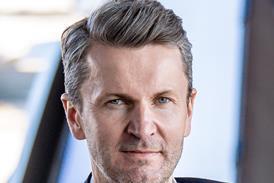
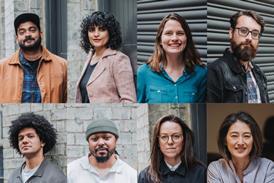
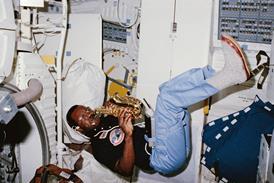
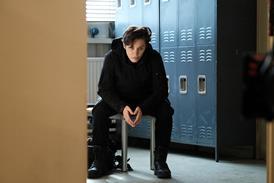
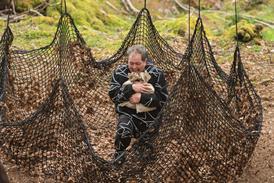

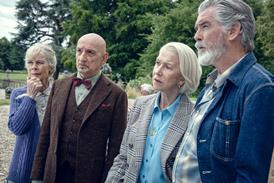







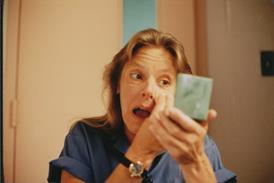



No comments yet